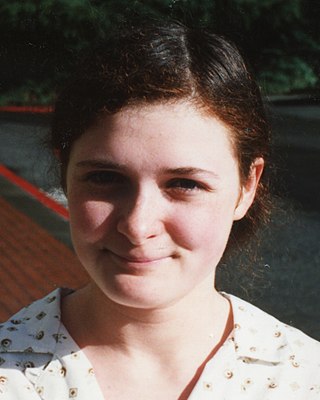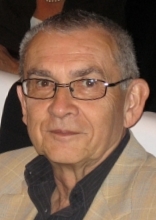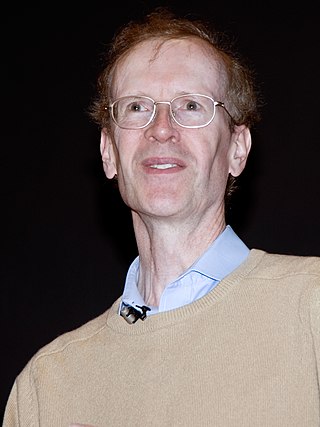Related Research Articles

A meteoroid is a small rocky or metallic body in outer space.

A meteor shower is a celestial event in which a number of meteors are observed to radiate, or originate, from one point in the night sky. These meteors are caused by streams of cosmic debris called meteoroids entering Earth's atmosphere at extremely high speeds on parallel trajectories. Most meteors are smaller than a grain of sand, so almost all of them disintegrate and never hit the Earth's surface. Very intense or unusual meteor showers are known as meteor outbursts and meteor storms, which produce at least 1,000 meteors an hour, most notably from the Leonids. The Meteor Data Centre lists over 900 suspected meteor showers of which about 100 are well established. Several organizations point to viewing opportunities on the Internet. NASA maintains a daily map of active meteor showers.

Israel Moiseevich Gelfand, also written Israïl Moyseyovich Gel'fand, or Izrail M. Gelfand was a prominent Soviet-American mathematician. He made significant contributions to many branches of mathematics, including group theory, representation theory and functional analysis. The recipient of many awards, including the Order of Lenin and the first Wolf Prize, he was a Foreign Fellow of the Royal Society and professor at Moscow State University and, after immigrating to the United States shortly before his 76th birthday, at Rutgers University. Gelfand is also a 1994 MacArthur Fellow.
In mathematics, in particular in the theory of modular forms, a Hecke operator, studied by Erich Hecke (1937a,1937b), is a certain kind of "averaging" operator that plays a significant role in the structure of vector spaces of modular forms and more general automorphic representations.

Ruth Elke Lawrence-Neimark is a British–Israeli mathematician and an associate professor of mathematics at the Einstein Institute of Mathematics, Hebrew University of Jerusalem, and a researcher in knot theory and algebraic topology. Outside academia, she is best known for having been a child prodigy in mathematics.
In group theory, restriction forms a representation of a subgroup using a known representation of the whole group. Restriction is a fundamental construction in representation theory of groups. Often the restricted representation is simpler to understand. Rules for decomposing the restriction of an irreducible representation into irreducible representations of the subgroup are called branching rules, and have important applications in physics. For example, in case of explicit symmetry breaking, the symmetry group of the problem is reduced from the whole group to one of its subgroups. In quantum mechanics, this reduction in symmetry appears as a splitting of degenerate energy levels into multiplets, as in the Stark or Zeeman effect.
In mathematics, an Euler system is a collection of compatible elements of Galois cohomology groups indexed by fields. They were introduced by Kolyvagin (1990) in his work on Heegner points on modular elliptic curves, which was motivated by his earlier paper Kolyvagin (1988) and the work of Thaine (1988). Euler systems are named after Leonhard Euler because the factors relating different elements of an Euler system resemble the Euler factors of an Euler product.

Yuri Ivanovich Manin was a Russian mathematician, known for work in algebraic geometry and diophantine geometry, and many expository works ranging from mathematical logic to theoretical physics.

Roger Newland Shepard was an American cognitive scientist and author of the "universal law of generalization" (1987). He was considered a father of research on spatial relations. He studied mental rotation, and was an inventor of non-metric multidimensional scaling, a method for representing certain kinds of statistical data in a graphical form that can be apprehended by humans. The optical illusion called Shepard tables and the auditory illusion called Shepard tones are named for him.

Bertram Kostant was an American mathematician who worked in representation theory, differential geometry, and mathematical physics.
Victor Alexandrovich Kolyvagin is a Russian mathematician who wrote a series of papers on Euler systems, leading to breakthroughs on the Birch and Swinnerton-Dyer conjecture, and Iwasawa's conjecture for cyclotomic fields. His work also influenced Andrew Wiles's work on Fermat's Last Theorem.
In the mathematical field of representation theory, a Kazhdan–Lusztig polynomial is a member of a family of integral polynomials introduced by David Kazhdan and George Lusztig (1979). They are indexed by pairs of elements y, w of a Coxeter group W, which can in particular be the Weyl group of a Lie group.

In number theory, Fermat's Last Theorem states that no three positive integers a, b, and c satisfy the equation an + bn = cn for any integer value of n greater than 2. The cases n = 1 and n = 2 have been known since antiquity to have infinitely many solutions.

Wiles's proof of Fermat's Last Theorem is a proof by British mathematician Andrew Wiles of a special case of the modularity theorem for elliptic curves. Together with Ribet's theorem, it provides a proof for Fermat's Last Theorem. Both Fermat's Last Theorem and the modularity theorem were almost universally considered inaccessible to prove by contemporaneous mathematicians, meaning that they were believed to be impossible to prove using current knowledge.

Antimatter comets and antimatter meteoroids are hypothetical comets and meteoroids composed solely of antimatter instead of ordinary matter. Although never actually observed, and unlikely to exist anywhere within the Milky Way, they have been hypothesized to exist, and their existence, on the presumption that hypothesis is correct, has been put forward as one possible explanation for various observed natural phenomena over the years.

Christopher Deninger is a German mathematician at the University of Münster. Deninger's research focuses on arithmetic geometry, including applications to L-functions.

Andrei Vladlenovich Zelevinsky was a Russian-American mathematician who made important contributions to algebra, combinatorics, and representation theory, among other areas.

On 13 October 1990, meteoroid EN131090, with an estimated mass of 44 kg, entered the Earth's atmosphere above Czechoslovakia and Poland and, after a few seconds, returned to space. Observations of such events are quite rare; this was the second recorded using scientific astronomical instruments and the first recorded from two distant positions, which enabled the calculation of several of its orbital characteristics. The encounter with Earth significantly changed its orbit and, to a smaller extent, some of its physical properties.
Mikhail Kapranov, is a Russian mathematician, specializing in algebraic geometry, representation theory, mathematical physics, and category theory. He is currently a professor of the Kavli Institute for the Physics and Mathematics of the Universe at the University of Tokyo.
References
- ↑ "STS-31". Mission Archives. NASA. 2006-10-14. Retrieved 2013-01-17.
- ↑ Balbus, Steven A.; Hawley, John F. (1991). "A powerful local shear instability in weakly magnetized disks". The Astrophysical Journal . 376: 214–233. Bibcode:1991ApJ...376..214B. doi:10.1086/170270.
- ↑ Spurný, P.; Ceplecha, Z.; Borovicka, J. (1991). "Earth-grazing fireball: Czechoslovakia, Poland, October 13, 1990, 03h27m16sUT". WGN. 19 (1): 13. Bibcode:1991JIMO...19...13S. Aphelion of its orbit changed from 2.80 AU to 1.80 AU.
- ↑ Foote, Jennifer (1990-02-05). "Trying to Take Back the Planet". Newsweek .
- ↑ Hormby, John (2007-06-05). "How Adobe's Photoshop Was Born". Story Photography. Archived from the original on 2007-06-11. Retrieved 2007-06-15.
- ↑ Berners-Lee, T.; Cailliau, R. (12 November 1990). "WorldWideWeb: Proposal for a HyperText Project". Archived from the original on 2012-12-19. Retrieved 2011-11-29.
- ↑ "Links and Anchors" . Retrieved 2011-11-29.
- ↑ Larimer, Tim (1999-11-22). "The Ultimate Game Freak". Time . Vol. 154, no. 20. Asia. Retrieved 2015-02-02.
- ↑ Gelfand, A. E.; Smith, A. F. M. (1990). "Sampling-Based Approaches to Calculating Marginal Densities". Journal of the American Statistical Association. 85 (410): 398–409. doi:10.2307/2289776. JSTOR 2289776.
- ↑ Kolyvagin, V. A. (1990), "Euler systems", The Grothendieck Festschrift, Vol. II, Progress in Mathematics, vol. 87, Boston: Birkhäuser, pp. 435–483, doi:10.1007/978-0-8176-4575-5_11, ISBN 978-0-8176-3428-5, MR 1106906
- ↑ Lawrence, R. J. (1990). "Homological representations of the Hecke algebra" (PDF). Communications in Mathematical Physics . 135 (1): 141–191. Bibcode:1990CMaPh.135..141L. doi:10.1007/BF02097660. S2CID 121644260 . Retrieved 2011-11-29.
- ↑ Hall, J. M.; Lee, M. K.; Newman, B.; Morrow, J. E.; Anderson, L. A.; Huey, B.; King, M. C. (December 1990). "Linkage of early-onset familial breast cancer to chromosome 17q21". Science . 250 (4988): 1684–9. Bibcode:1990Sci...250.1684H. doi:10.1126/science.2270482. PMID 2270482.
- ↑ Colman, Andrew M. (2009). A Dictionary of Psychology (3 ed.). Oxford University Press. ISBN 9780191726828.
The illusion was first presented by the US psychologist Roger N(ewland) Shepard (born 1929) in his book Mind Sights: Original Visual Illusions, Ambiguities, and Other Anomalies (1990, p. 48), Shepard commented that 'any knowledge or understanding of the illusion we may gain at the intellectual level remains virtually powerless to diminish the magnitude of the illusion' (p. 128).